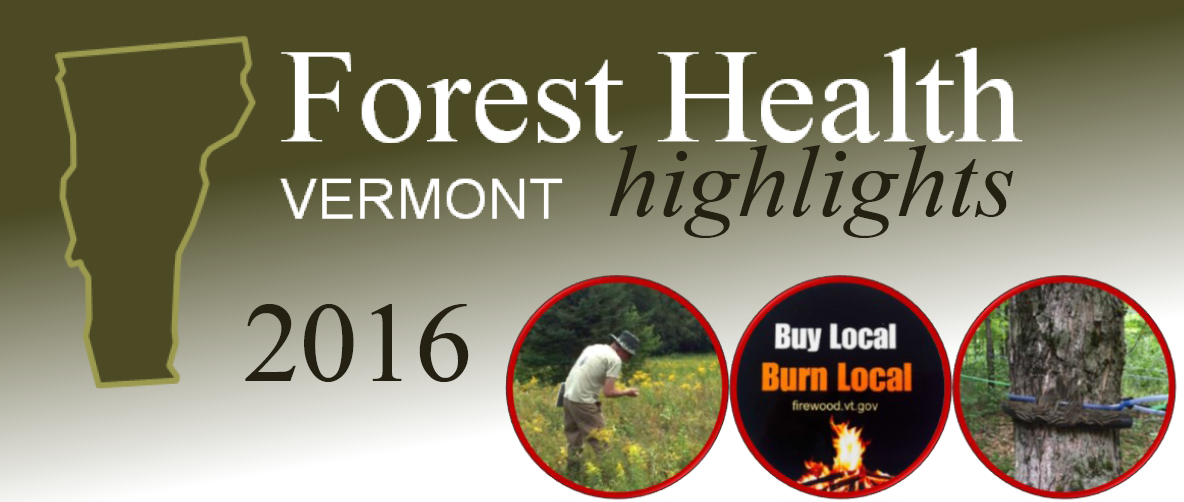2016 Vermont Forest Health Highlights
Apr. 1st 2017An annual assessment of Vermont’s forest health provides a snapshot in time of everything from tree species abundance, to major forest stressors, to programmatic highlights of importance in maintaining healthy forests.
Populations of the native forest tent caterpillar (FTC) reached outbreak proportions in 2016, defoliating 24,278 acres of hardwood forests, mostly in northeastern counties. Sugar maple, ash, oak and beech are some of the preferred hosts, while red maple is often left untouched. Defoliated trees normally will refoliate in early summer and replenish lost food. However, in 2016, we observed very limited refoliation due to midsummer drought. FTC populations are expected to expand over the next few years.
Midsummer drought also resulted in early color on sugar maple and red maple, leaf scorch, and early symptom development of beech bark disease. Additional symptoms of tree health impacts are likely over the next few years.
White pine needle damage has been visible off and on over the past 10 years, but was particularly evident in early summer last year. Several research projects are underway in the region to narrow in on fungal species involved, vulnerability of trees based on site characteristics, and long-term growth and mortality implications. In 2016, we mapped 30,666 acres of white pine needle damage during aerial surveys. Wet weather in June of 2015 likely encouraged growth of the brown spot needle blight organism, resulting in the 2016 damage episode. Findings from a US Forest Service study of growth impacts found that since 2009 there has been a 10-60% decline in annual wood growth on affected pines.
Preventing the introduction or spread of non-native species again takes center stage. A cadre of 38 new volunteers were trained as Forest Pest First Detectors to conduct surveys and provide outreach on pests we don’t currently have in Vermont, emerald ash borer and Asian longhorned beetle, as well as hemlock woolly adelgid, which remains in scattered populations in southern Vermont. Other non-native insects and diseases not observed in Vermont include winter moth, thousand cankers disease, oak wilt, and sudden oak death.
Fir mortality caused by non-native balsam woolly adelgid populations increased in 2016 and resulting in over 5,000 acres of mortality. We visited xix sites where the balsam woolly adelgid predator, Laricobius erichsonii, was released in the early 1960s to see if that beetle could be recovered, but found no evidence of the predator.
Non-native invasive plant management efforts grew in 2016, involving nearly 600 volunteers and plant removal activities on 20 state-owned properties.
In addition to work on forest stressors, we monitor forest health to identify trends in condition and understand stress and recovery dynamics. Sugar maple plots monitored at 36 sites showed increased foliage transparency as a result of forest tent caterpillar defoliation. While visiting an additional 42 forest sites statewide as part of the Vermont Monitoring Cooperative, we observed a spike in new dead twigs. This may have resulted from a lack of snow cover the previous winter, combined with dry summer conditions.
 ecoNEWS VT
ecoNEWS VT